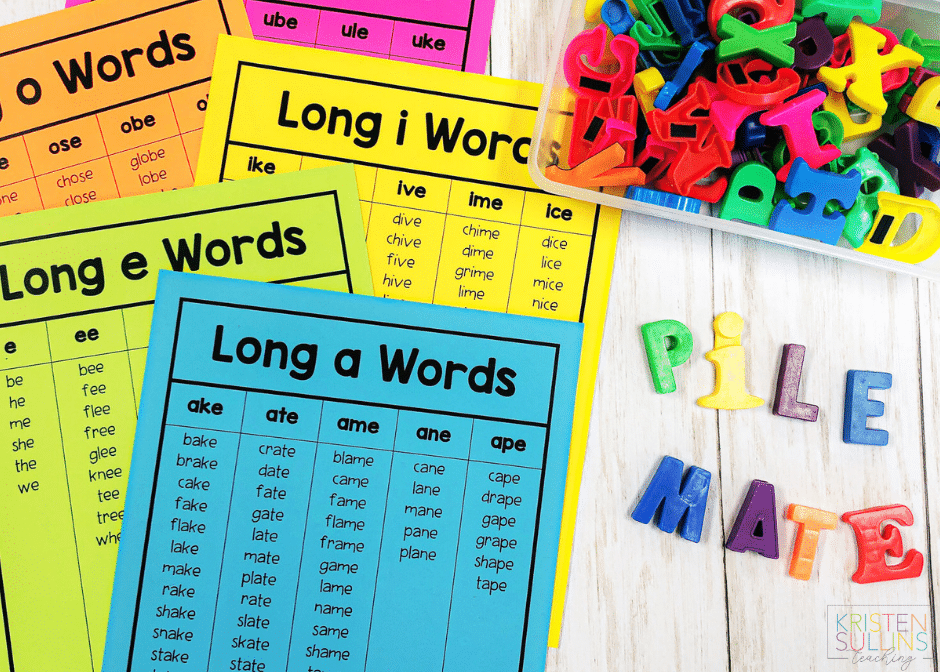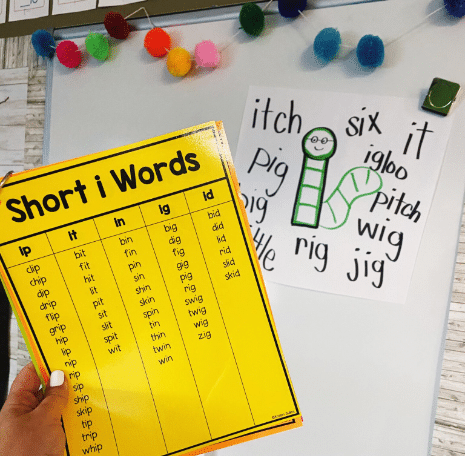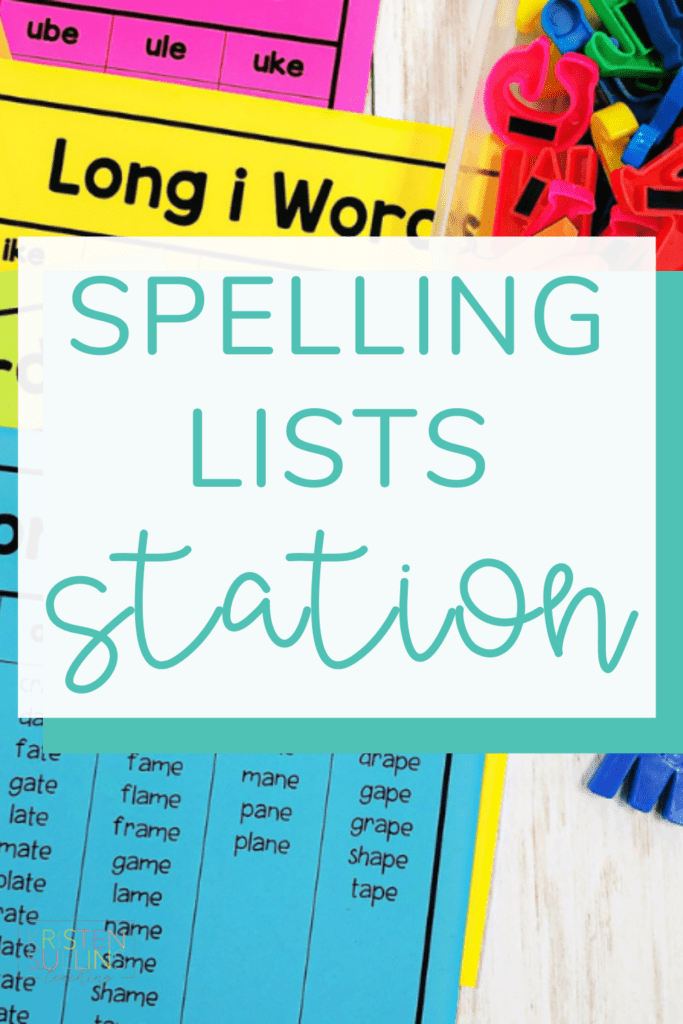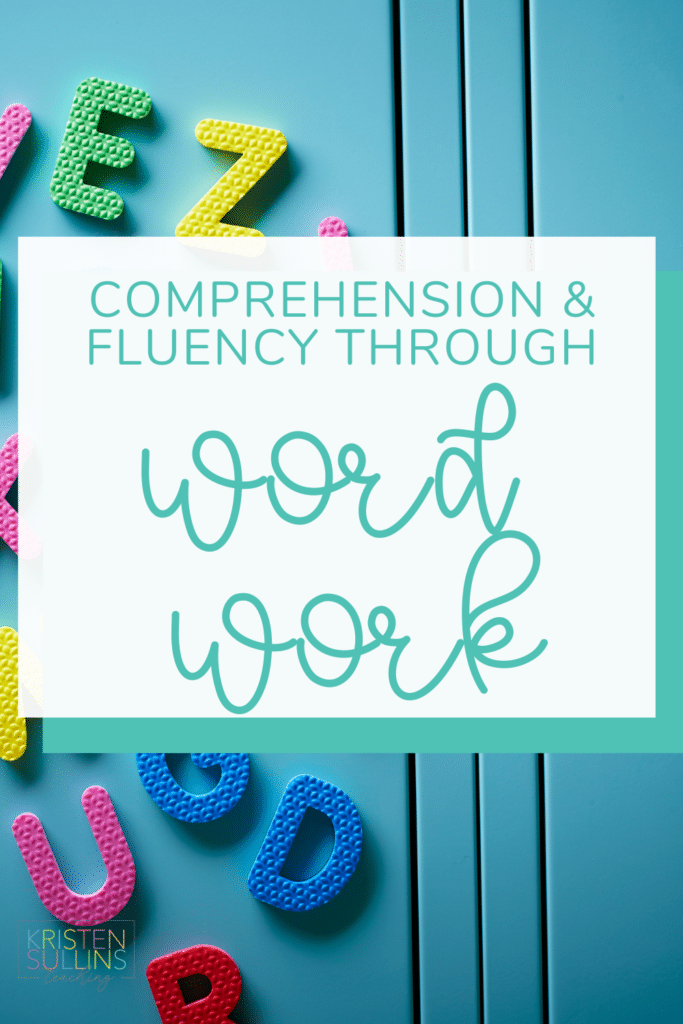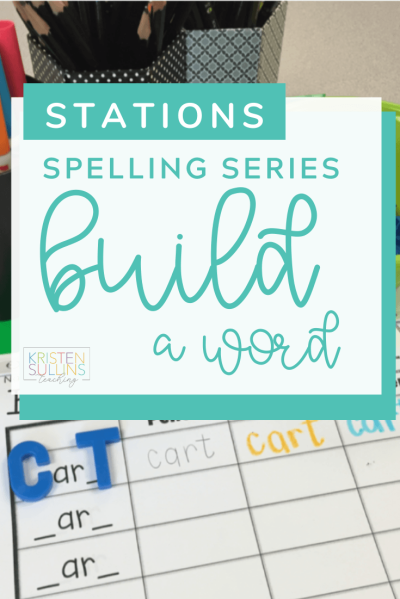Welcome back to the Spelling Station Activities for First Grade blog series!
All of these activities are spelling stations that I use in my own first grade classroom that take little to no prep on my part (because who has time for that, am I right?).
These spelling activities can be done:
- One at a time as a class (as your daily spelling practice/lesson)
- In a small group setting (as intervention)
- At a spelling station (set out one activity daily or set out multiple to give students choice over their activity – this was my personal favorite, I usually set out 4-5 activities for four weeks which saved me SO much time)
Here's a sneak peek at the entire series of first grade spelling activities that I will be covering:
Spelling Series: Stamps and Playdough
Spelling Series: Interactive Spelling Wall
Spelling Series: Rainbow Words
Spelling Series: My “dge” Words Freebie
Spelling Series: Keyboard Spelling
Spelling Series: Hangman Spelling
My best advice is to make the most of the materials that you already have in your classroom. A lot of the spelling activities in this series don’t require any materials other than writing utensils and paper, start with those!
Also, when it comes to incorporating spelling activities into your stations, don’t try to do it all at once. Start small and slowly add activities throughout the year! This will help your students maintain independence during station time because they aren’t having to learn a lot of new routines at once.
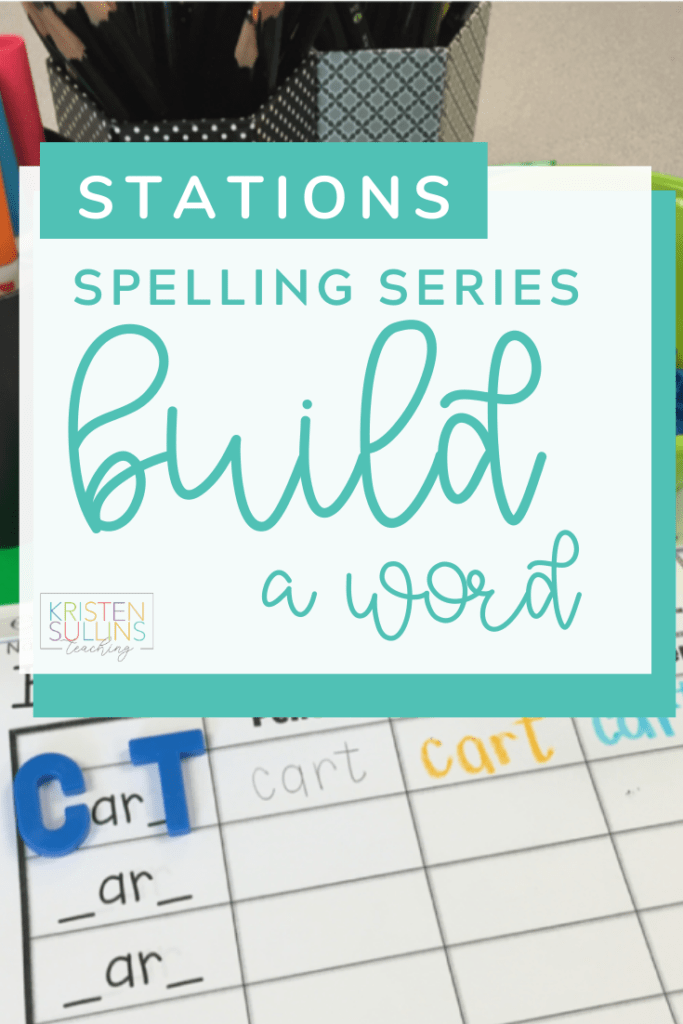
Spelling Knowledge in First Grade
So what kind of spelling knowledge should a first grade student really have?
Here are a few foundations of spelling knowledge:
Sounds can be represented by a single letter or a combination of letters (digraphs, blends)
Letters may have more than one sound
Some sounds can be represented by different letters
When spelling, words can be separated into single sounds or a combination of sounds
Knowing the 6 syllable type can help students spell
Some words do not follow typical spelling rules/patterns, BUT you can match letters to sounds in at least part of those words
Asking yourself “Does the world look right?” after spelling a word
Spelling words (encoding) and reading words (decoding) go hand and hand! They should be taught together, NOT in isolation!
First grade students are also expected to spell high-frequency words (sight words) without sounding out letter-by-letter.
Spelling Station: Build a Word
Option 1: No-Prep Worksheets
Directions:
I created a set of worksheets to use in my own word building station that allow my first grade students to follow the same routine every week of the school year. (But you could totally have students do this spelling activity on a blank sheet of paper!)
To use this activity, students must:
- Builds a word with magnetic letters
- Write the word three times (with a pencil, crayon and marker)
Here’s a little more detail about this station activity for you…
Students are given the phonics/spelling pattern and they must add one letter (or more) to the word family to create a new word. Then the student must write the new word three times (in pencil, crayon and marker).
I have found in my own classroom that students love this activity because using pencils, crayons and markers is fun and engaging to them.
Materials:
The go-to choice of almost every first grade teacher for word building materials is going to be magnetic letters.
They really just can’t be beat because they are a physical representation of what students are used to seeing. They are easy to manipulate and they are typically already purchased by the school.
But, if you are looking to spice things up a little bit, here are some alternatives to magnetic letters for a word building station:
- letter beads and pipe cleaners
- sand and q-tips
- reusable ice cubes
- stamps and ink
- stamps and playdough
- hangman boards
- dry erase boards
- magnadoodle boards
- keyboard for typing
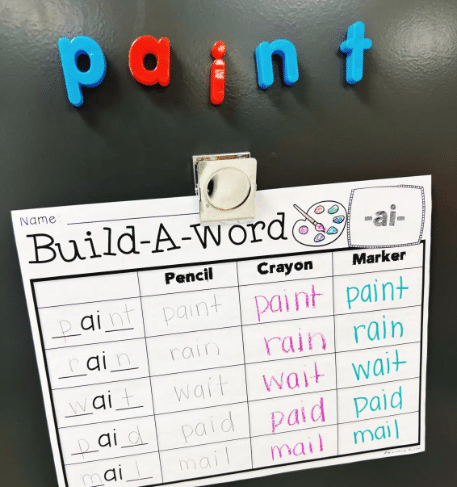

Option 2: Laminated Word Lists
Spelling Tip: Use Spelling Lists
I mentioned earlier a few tricks I use in my spelling station so that I only have to switch out materials every four weeks. The key to this method is using spelling lists.
What is a spelling list?
As simple as it sounds, it’s a list of words that follow the same spelling rule/pattern. I’ve found that using a spelling pattern rather than a set “10 spelling words” helps students really understand the spelling rule rather than just memorizing those ten words. These spelling lists are also sometimes referred to as “word family” lists because words that follow the same spelling pattern are considered to be in the same “family”.
How do you use a spelling list?
Spelling and word family lists can be used in a variety of ways:
- Spelling Station to spell the word pattern of the week. This means I only change out the spelling or word family list each week and the activities can stay the same! Super low-maintenance!
- As a “go to” list for teachers when generating word families whole group phonics/spelling instruction
- A list of words for teachers to review during small group warm ups for guided reading or interventions (make flashcards, build words, manipulate phonemes with plastic letters, etc.)
- A list of words for families to practice reading and writing
Again, this is not anything that you have to buy. You can simply type up a list of spelling words or spelling pattern words and put it in your station.
Teacher Tips about Spelling Lists
- I laminated my lists for durability from year to year, but you don't even have to take that step if you don't want to.
- I used a different color of paper for each week. This made it very easy to make sure my long a lists didn't get mixed up with the long i lists.
- I had four copies of each list set out each week because I typically had 3-4 students visit that station at a time and I did not want them to have to share.
- I've also done it where I had a month's worth of lists connected with a binder ring which mean even less prep on my part, but the disadvantage of this was that students would often end up on the wrong list!
- You could have all students share one list if you wanted to, or you could leave that list posted somewhere in your classroom.
There is no right or wrong way to use a spelling list as a station!
First Grade Build A Word Spelling Activities
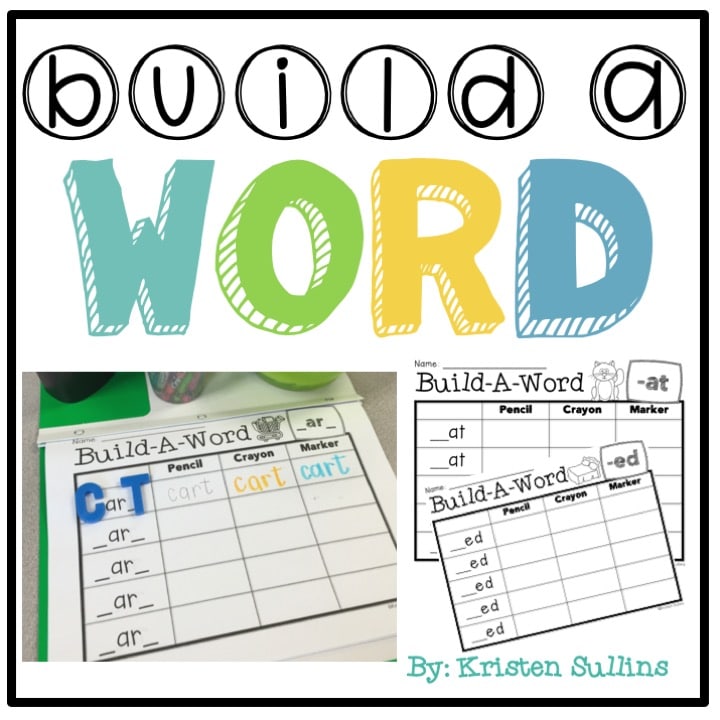
Looking for a fun and engaging word building activity?
Give students the structured support they need to independently build new words and learn it through repetition by writing it with pencil, crayon and marker.
What’s the benefit of building words with targeted phonics and spelling patterns:
• Phoneme blending in addition to onset and rhyme (word family) matching
• Hands on practice with key phonics skills
• Consistency! Every spelling pattern taught in first grade is included in this product so you can follow the same routine every week of the school year!

